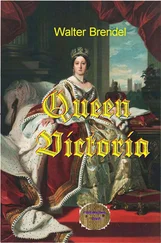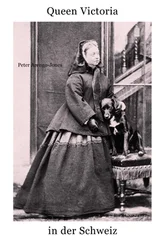Hers did not begin as a cult of personality: that happened later. From infancy those closest to her schooled her in a course of exemplary behaviour: her mother, her governess, her canny Uncle Leopold. A backlash against the burlesque and buffoonery of her immediate predecessors, their model of rectitude encouraged a suppression of self in the interests of a tarnished Crown. Outwardly, Victoria’s monarchy came to be characterised by probity, continence and earnestness, all ‘Victorianisms’ derided by posterity. Yet this mandate of good behaviour provided an imprimatur of some resilience for a throne that, in political terms, continued to lose ground to an increasingly elected and representative Parliament. If Victoria did not always keep faith with that mandate, she mostly avoided publishing her transgressions. Returning to the fray at the time of her death, The Times was able to assert unblushingly that, if the monarchy stood ‘broad-based upon the people’s will … we owe these results, to a degree which is hardly possible to over-estimate, to the womanly sweetness, the gentle sagacity, the utter disinteredness, and the unassailable rectitude of the Queen’. 3
Readers of the following account of Victoria’s life will discover that her sweetness, sagacity, disinteredness and rectitude were all variable qualities: she was a woman of dizzying contradictions and myriad inconsistencies, but deeply etched in her makeup was a towering wilfulness that intermittently rendered her foolish, selfish, blinkered, exasperating and apparently self-destructive. In virtually the same breath she was capable of immense charm, humility, compassion, candour, perspicacity, generosity, intrepidity and understanding. ‘How sadly deficient I am, and how over-sensitive and irritable, and how uncontrollable my temper is when annoyed and hurt,’ she confessed to her journal on New Year’s Day 1881. 4She was unflinchingly honest throughout her life, especially with herself. Repeatedly that honesty failed to equate with accurate self-knowledge. A surer estimate than that of The Times belongs to her last prime minister, Lord Salisbury, who commended her ‘inflexible conscience’ and ‘unflagging industry’. Neither predisposition shaped her conduct life long.
She did not read Walter Bagehot’s The English Constitution , published in 1867. Even without that guidance – staple reading for her successors – she insisted to ministers and prime ministers, clergymen, generals, foreign statesmen and rulers, as well as her own family, on her rights to be consulted, to encourage and to warn, and did so with vehemence and some success. A reluctant showman, she is unlikely to have embraced Bagehot’s definition of public life as akin to theatre: ‘the climax of the play is the Queen’. 5By the end of her reign, however, she had convincingly overturned his qualification that ‘nobody supposes that their house is like the court; their life like her life; her orders like their orders’. Not least among Victoria’s achievements was her calculated presentation of herself as an acme of ordinariness. Even as she exulted in the riches and grandeur of empire, she appeared Britain’s first middle-class monarch, her way of life recognisable and, for the most part, comprehensible to the vast mass of her subjects. Moreover she did so on an international stage, so that the woman who was herself so preoccupied with British prestige abroad became in time a chief source of the very prestige she valued so highly.
Victoria believed in commemoration. She cheated death’s sting by celebrating those taken from her in concrete and enduring form. She in turn inspired similar acts of conspicuous memorialising and rightly remains among Britain’s best-known and most visible monarchs. So extensive are surviving primary sources relating to her life and reign that it is possible, as academics and biographers have discovered, to support divergent and conflicting interpretations. The present, deliberately short account of Victoria’s life is necessarily a selective portrait. It encompasses aspects of her private and public worlds, of her internal as well as her external landscapes. None is exhaustive, though the focus is consistently Victoria herself: my aim has not been to offer a vision of the age, of her marriage, her family, her legacy. Rather, in attempting to capture what I consider telling aspects of this enduringly great Briton, I hope the present account arrives at a pithy but illuminating definition of its own, albeit qualified and circumscribed by the restrictions of its format.
Конец ознакомительного фрагмента.
Текст предоставлен ООО «ЛитРес».
Прочитайте эту книгу целиком, купив полную легальную версию на ЛитРес.
Безопасно оплатить книгу можно банковской картой Visa, MasterCard, Maestro, со счета мобильного телефона, с платежного терминала, в салоне МТС или Связной, через PayPal, WebMoney, Яндекс.Деньги, QIWI Кошелек, бонусными картами или другим удобным Вам способом.












